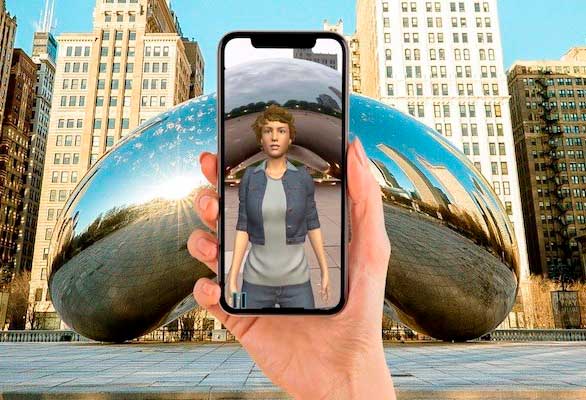Avatars come in many forms, each with their own application areas: as a navigator in the vastness of the virtual world, a virtual assistant in VR training courses, or a digital model in the impressive worlds of video games. Avatars are artificial face, graphic figure, or image that is assigned to Internet users in a virtual world. It serves as an extension in the virtual realms and can show a great resemblance to us depending on the type of avatar. The options for creating avatars are as diverse as their shape. An easy and quick way to form is images or icons that you can choose from a ready-made library or download from your phone, disk, or cloud. The digital representative is displayed in two dimensions and can be used to identify the user and other participants.
Online character generators like Getavataaars are also going in the same direction. A personal avatar can be created from pre-made components such as eyes, hair, and clothes. It is mainly depicted as a comic and offers only particular customization due to the limited number of possible combinations. This form of avatar is used in video games such as The Sims, World of Warcraft, or Elder Scrolls, where the character menu gives you the ability to tailor the character to your ideas and wishes.
Unlike realistic avatars, random or abstract avatars offer a certain degree of anonymity, as they are not necessarily based on real people and thus potentially can be played by anyone. A great advantage for anyone who uses the virtual world to distract from real life and does not find similarities in character or intentionally wants to try on other roles.
With avatar photos created, Pinscreen takes a fun, different approach. Complete, photorealistic 3D avatars can be made from simple portrait photos using advanced (often smartphone-based) 3D scanning technology. These types of avatars have a more remarkable resemblance to a "real person" due to their photo base. As a result, users can identify much more with their virtual "twin."
Pinscreen's proprietary AI technology called paGAN (Photoreal Avatar GAN) provides, unlike other engines, a complete animation system that is compatible with 3D software such as Maya or Blender and thus makes it easier to animate avatars.
Another example of 3D avatar modeling is Samsung's Neon project. Star Labs, a subsidiary of Samsung, has unveiled its AI-powered lifeforms at the Consumer Electronics Show (CES). These "neons" are virtual creatures modeled after real-life models and can display both emotion and intelligence. They are based on Samsung's Core R3 Engine, designed to create unique behaviors and interactions. "Neons" are used in films, augmented reality, or smartphone applications.
Also interesting is the latest product from Geenee AR in collaboration with Ready Player Me, with the help of which a digital avatar can be transferred into reality. The product tracks the slightest changes in the body and creates a virtual avatar in real time.
Another bonus is that there is no need for coding. The Ready Player Me avatar is simply dragged into the Geenee WebAR Builder platform, where the software automatically creates your digital twin. An excellent opportunity to get video and photos with your digital counterpart.
A simple selfie is enough to create your digital twin. The created avatars will be compatible with over 1800 meta world platforms and popular games.
However, avatars are used not only in the business sector but in often forgotten areas, such as the language of gestures. SIMAX by the Sign Time company uses avatars to automatically transfer content to the gesture language. In this way, the news programs are visually translated by avatars and not by real people. The signs of their simple creation can increase the availability of information for deaf people.

